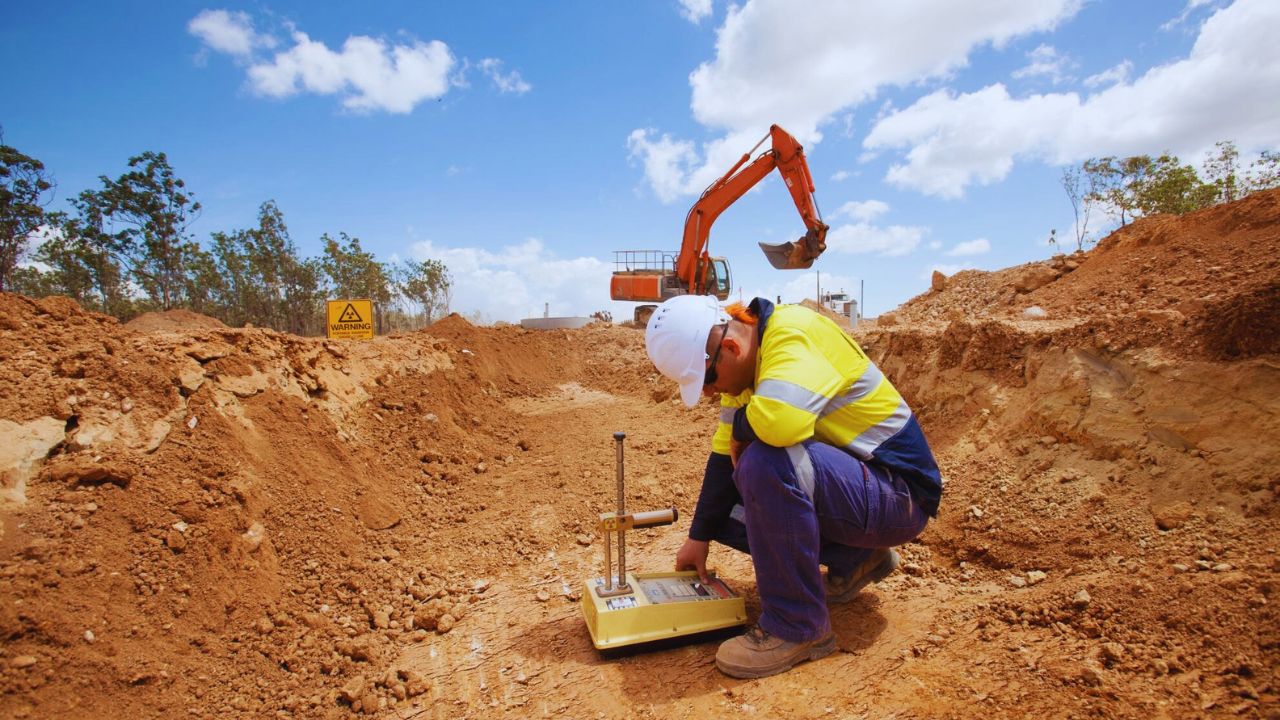The Main Principles Of Geotheta
The Best Guide To Geotheta
Table of ContentsThe 8-Second Trick For GeothetaThe Geotheta IdeasAll about GeothetaSee This Report on GeothetaGeotheta Can Be Fun For Anyone

They carry out website investigations, collect samples, execute research laboratory examinations, and assess data to examine the viability of the ground for building and construction tasks - Geotechnical Engineers. Based on their searchings for, geotechnical engineers supply suggestions for foundation style, incline stability, maintaining structures, and mitigation of geotechnical threats. They collaborate with various other experts, such as designers, architectural designers, and construction teams, to ensure that geotechnical considerations are incorporated into the total task design and implementation
By evaluating the behavior and homes of soil and rock, they can recognize potential geotechnical dangers such as landslides, dirt negotiation, or incline instability. Their knowledge assists stop failings or accidents that can jeopardize lives and residential property. Below are some comprehensive duties and responsibilities of a geotechnical designer: Website Examination: Geotechnical engineers conduct site investigations to gather information on subsurface conditions.
They analyze the data to recognize the residential properties and actions of the dirt and rock, including their toughness, leaks in the structure, compaction features, and groundwater conditions. Geotechnical Analysis and Style: Geotechnical designers examine the data collected throughout website examinations to assess the security and viability of the site for construction jobs. They execute geotechnical calculations and modeling to review factors such as birthing ability, negotiation, incline stability, side planet stress, and groundwater circulation.
About Geotheta
Foundation Style: Geotechnical engineers play a vital duty in designing structures that can safely sustain the intended framework. They examine the dirt problems and load requirements to figure out the suitable foundation kind, such as superficial foundations (e.g., footings), deep structures (e.g (https://www.storeboard.com/geotheta)., heaps), or specialized methods like dirt improvement. They think about aspects such as settlement limits, bearing ability, and soil-structure interaction to create optimum structure designs
They review building plans, screen site activities, and perform field examinations to validate that the layout recommendations are adhered to. If unforeseen geotechnical problems occur, they examine the situation and supply recommendations for removal or adjustments to the layout. Threat Evaluation and Mitigation: Geotechnical designers examine geotechnical hazards and threats connected with the project website, such as landslides, liquefaction, or soil disintegration.

Collaboration and Interaction: Geotechnical engineers work very closely with other specialists involved in a job, such as architects, architectural engineers, and building and construction groups. Efficient interaction and collaboration are necessary to integrate geotechnical factors to consider into the general project layout and building procedure. Geotechnical engineers supply technical proficiency, solution inquiries, and make sure that geotechnical demands are met.
Indicators on Geotheta You Should Know
Here are some kinds of geotechnical engineers: Foundation Designer: Structure designers focus on designing and analyzing structures for structures. They evaluate the dirt problems, load needs, and website characteristics you can check here to establish the most ideal structure type and layout, such as superficial structures, deep structures, or specialized methods like pile structures.
They assess the elements affecting slope security, such as soil buildings, groundwater conditions, and incline geometry, and develop strategies to stop slope failings and alleviate threats. Quake Engineer: Earthquake designers focus on evaluating and designing frameworks to endure seismic pressures. They assess the seismic risk of a site, assess dirt liquefaction potential, and develop seismic design standards to ensure the safety and resilience of frameworks during quakes.
They do area screening, collect examples, and examine the collected data to identify the soil residential or commercial properties, geologic developments, and groundwater conditions at a website. Geotechnical Instrumentation Engineer: Geotechnical instrumentation designers concentrate on tracking and determining the behavior of dirt, rock, and structures. They install and preserve instrumentation systems that keep track of aspects such as soil negotiation, groundwater degrees, slope motions, and architectural variations to examine efficiency and supply early warnings of prospective issues.
Some Of Geotheta
They conduct examinations such as triaxial tests, debt consolidation tests, direct shear examinations, and permeability examinations to collect information for geotechnical evaluation and layout. Geosynthetics Engineer: Geosynthetics engineers specialize in the design and application of geosynthetic materials, such as geotextiles, geogrids, and geomembranes. They use these products to boost dirt security, strengthen inclines, give drainage services, and control disintegration.
They often tend to be investigatory individuals, which implies they're intellectual, introspective, and investigative. They wonder, systematic, reasonable, logical, and rational. A few of them are additionally social, indicating they're kind, generous, participating, patient, caring, helpful, compassionate, tactful, and friendly. Does this seem like you? Take our totally free profession examination to figure out if geotechnical designer is among your top profession suits.
In the workplace environment, geotechnical designers use specialized software tools to carry out calculations, produce designs, and analyze data. They prepare reports, evaluation job specs, connect with customers and group members, and coordinate project tasks. The office setup gives a conducive setting for research, evaluation, and partnership with other professionals entailed in the task.
The 8-Minute Rule for Geotheta
They frequently see job websites to conduct website investigations, analyze geotechnical conditions, and gather information for analysis. These brows through include traveling to different locations, in some cases in remote or tough surfaces. Geotechnical designers might do dirt tasting, conduct examinations, and screen building tasks to guarantee that the geotechnical elements of the project are being carried out properly.
Geotechnical designers additionally work in specialized geotechnical laboratories. Geotechnical laboratory engineers function extensively in these settings, handling testing equipment, operating instruments, and tape-recording information.